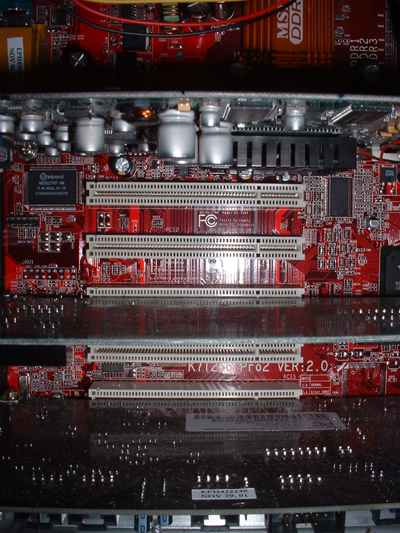Functionally, installing a new optical drive
is identical to installing a hard drive, minus the need to partition
and format. There are a few other considerations however.
When
installing a DVD drive, take time to ensure that your system has the horsepower necessary
to view a DVD movie successfully before you spend the cash on
the drive. A good general guideline is a minimum processor speed of
~400MHz with a video card capable of DVD decoding.
Almost all modern video cards have this feature built into them, but
as a rule, any ATI card built later than 1998 will, as will any NVIDIA
Geforce video card. With integrated video (video card built into your mainboard)
it's a bit of a crapshoot. If you have a decent processor
and a recent video card, you are all set.
For CD-RW drives, computer speed is
also important. Generally the faster drives will require faster computers to run
reliably. All CD-RW retail box drives should have minimum specs included. Ask
your dealer about these issues if you are unsure.
 Adding PCI
expansion cards.
Adding PCI
expansion cards.
A
simple procedure provided you have a free PCI slot. Simply insert the expansion card firmly
into the slot when the computer is off, it should sit evenly once inserted,
with only a fraction of the gold traces on the bottom of the card
visible.
Screw the card into the expansion bracket. Now boot into
Windows. Your new card will be detected and you will be prompted to install
drivers.
Adding a new video-card.
There are
only a few reasons for doing this. First and foremost is gaming. If having the
hardware required to play the latest and greatest games is your goal,
you will need to upgrade your video card, but probably more than that also. While
an explanation of the function and complexities of modern 3D-accelerated video cards is beyond the
scope of this article, suffice to say that both a fast video card and a fast
processor are both needed in order to play newer 3D computer games.
If you
are looking to get into this area, the best thing to do is ask an expert, and
the experts we have available in the PCstats Forums
will be more than happy to guide you towards game playing nirvana.
Otherwise, you might want
a new video card to partner up with a new monitor. One limitation of older
video cards is that they tend to have a minimal amount of onboard memory installed, which
limits the screen resolutions and amount of colours that they can display.
For example, in order to display 2D images in 32-bit colour on a
monitor with a resolution of 1280x1024 or higher, you are going to need at least
an 8MB video card. Using two or more monitors at once is also possible, and many
modern video cards come equipped with two VGA connectors to facilitate this.
The AGP port is generally the brown slot
at the top of the row of peripheral slots that runs down the board. Ensure that
the catch (AGP Retention Mechanism) at the far end of the port is open, if it is
present. Insert the card firmly into the AGP slot. It should settle evenly, with
just a tiny fraction of the gold traces at the bottom of the card visible. Screw
the card into the expansion bracket.

